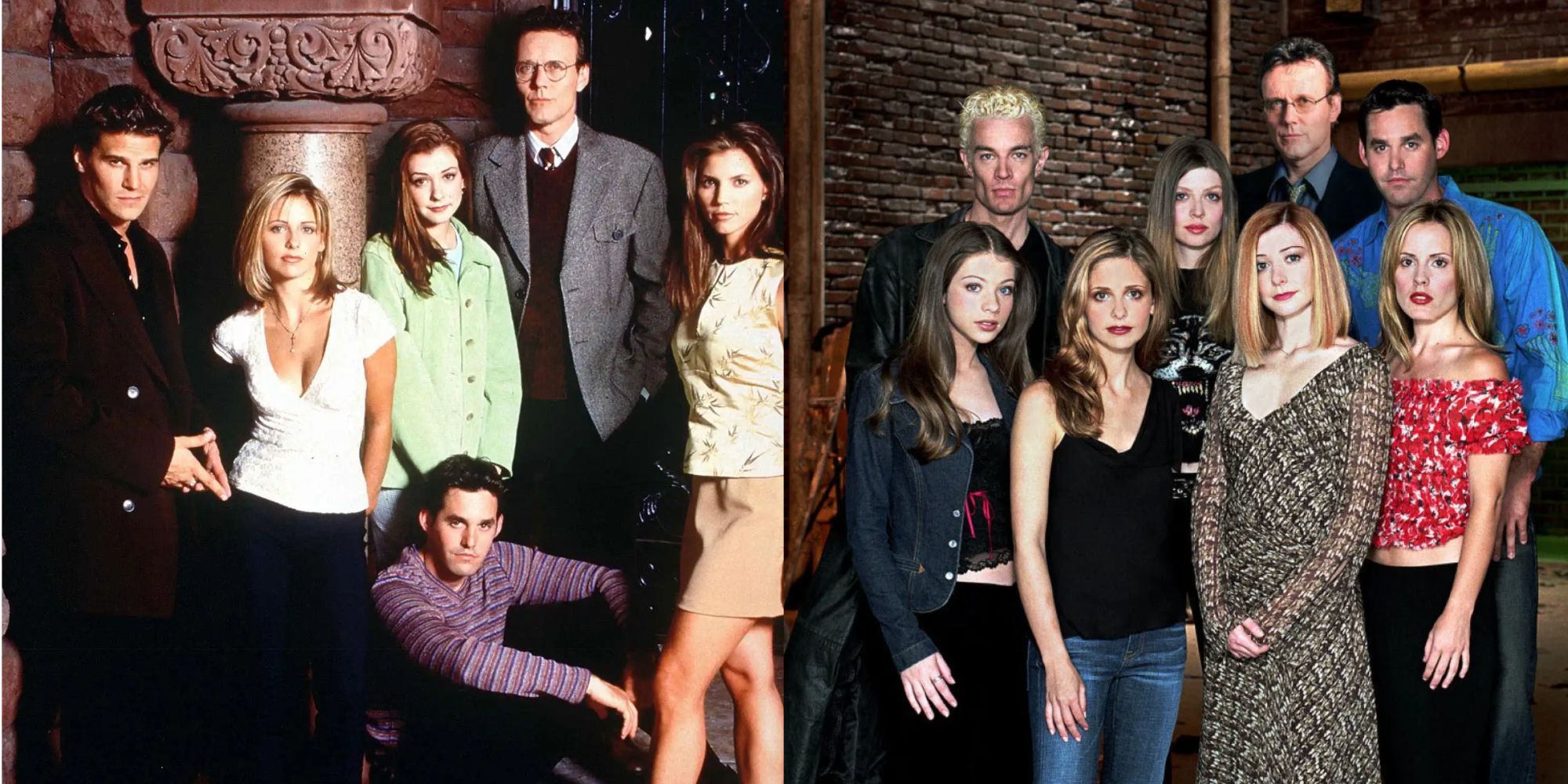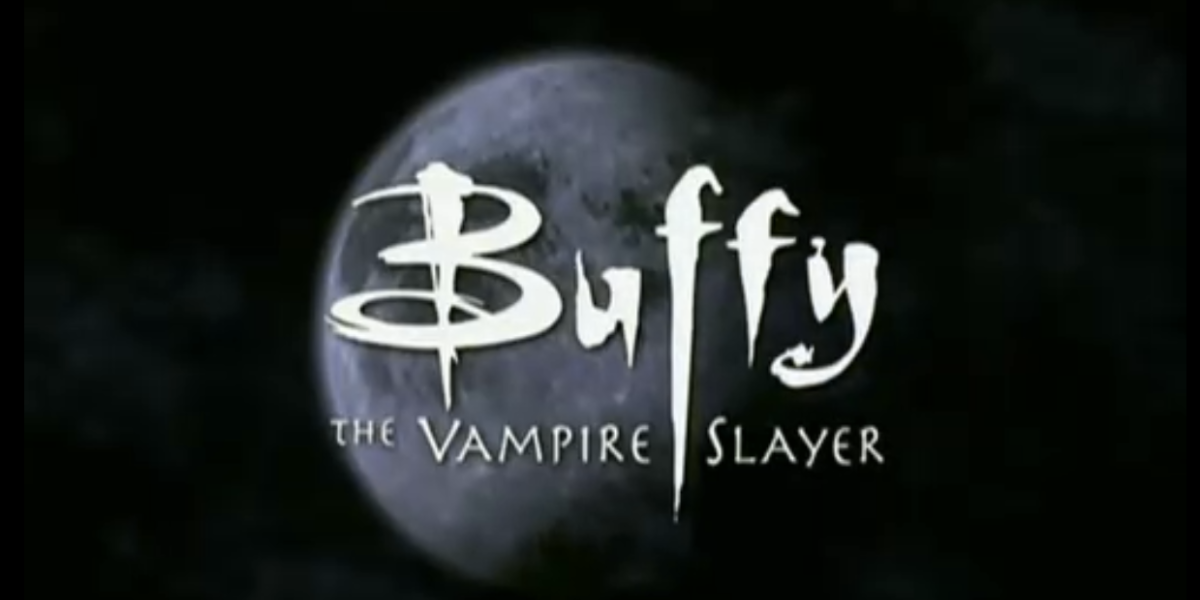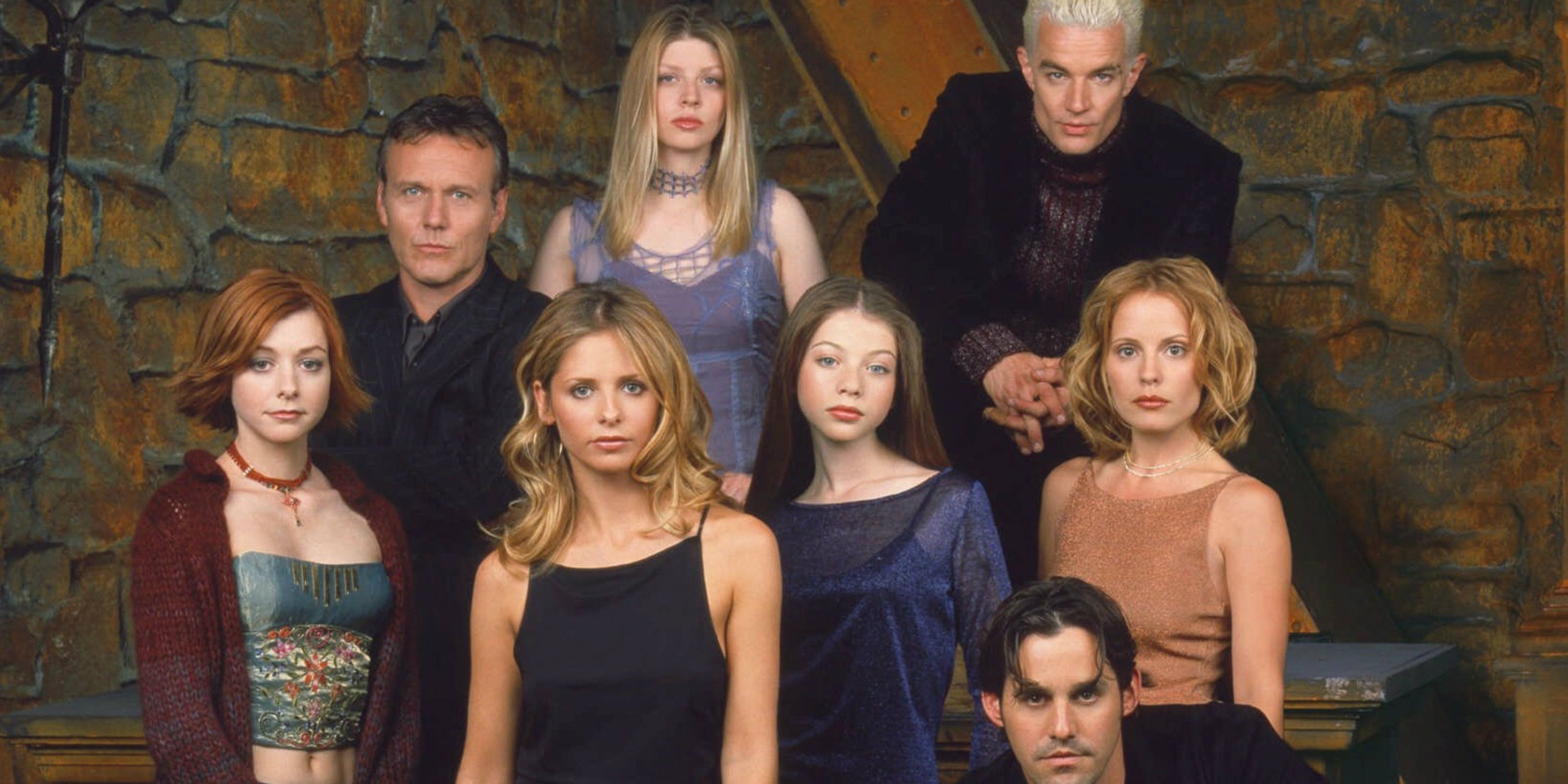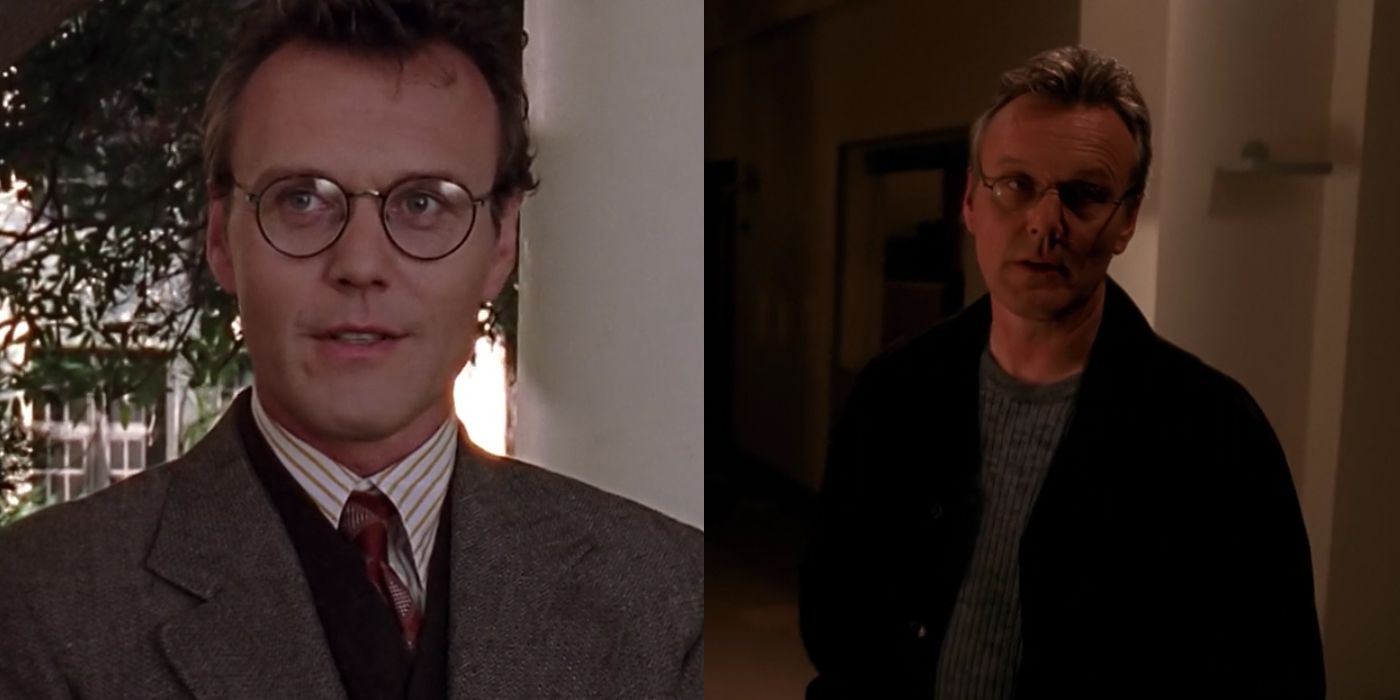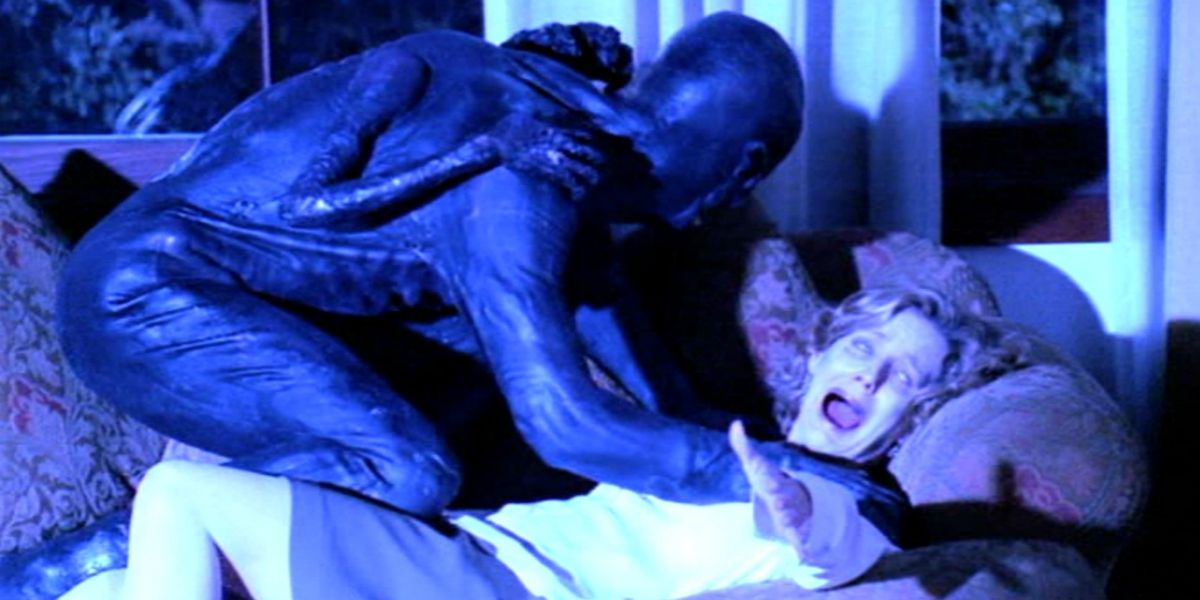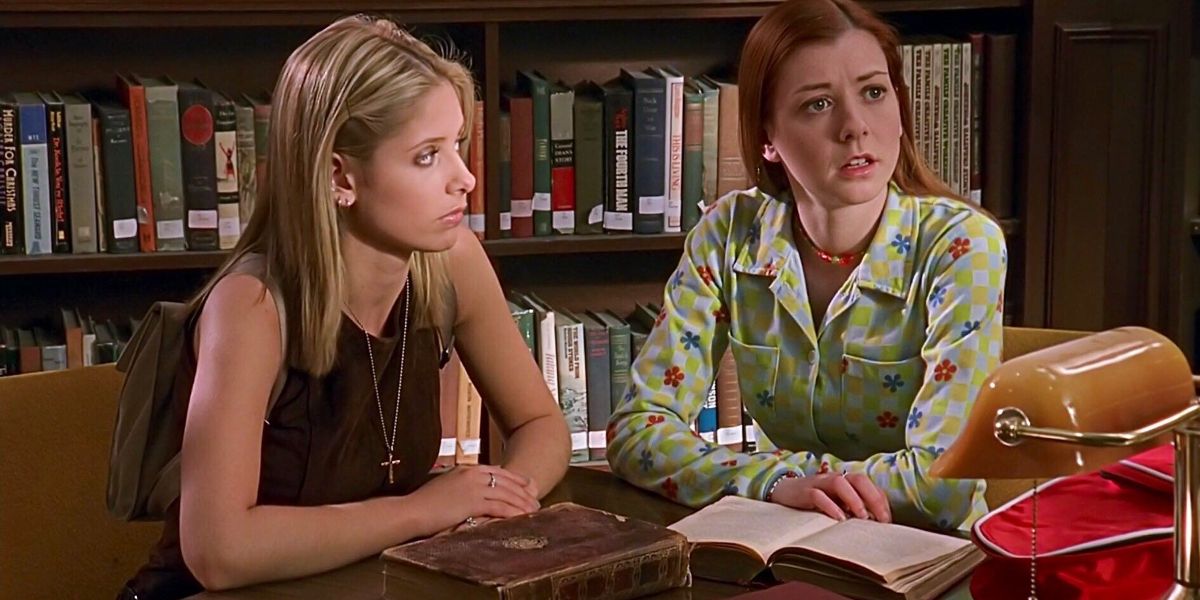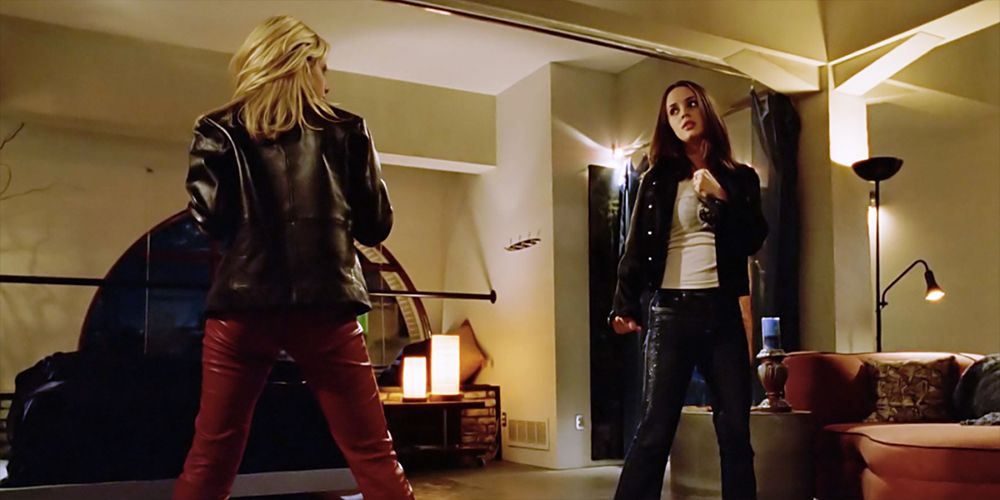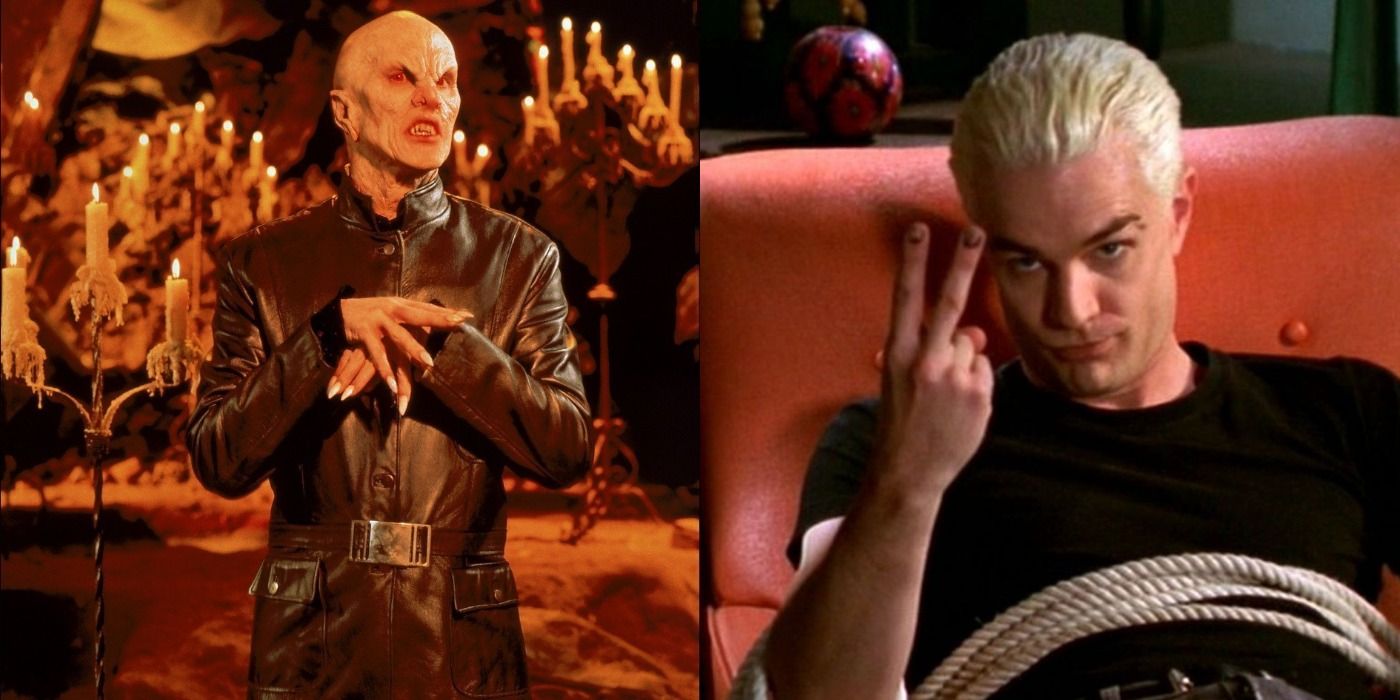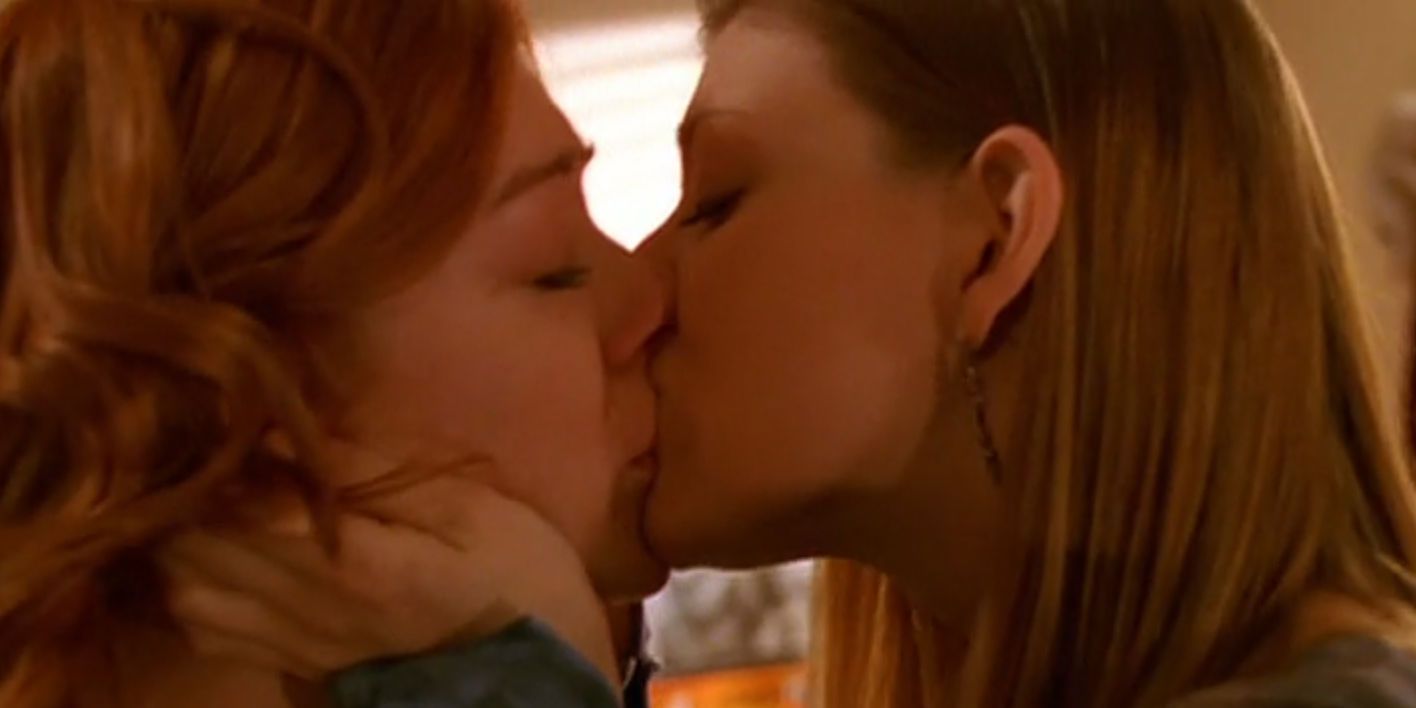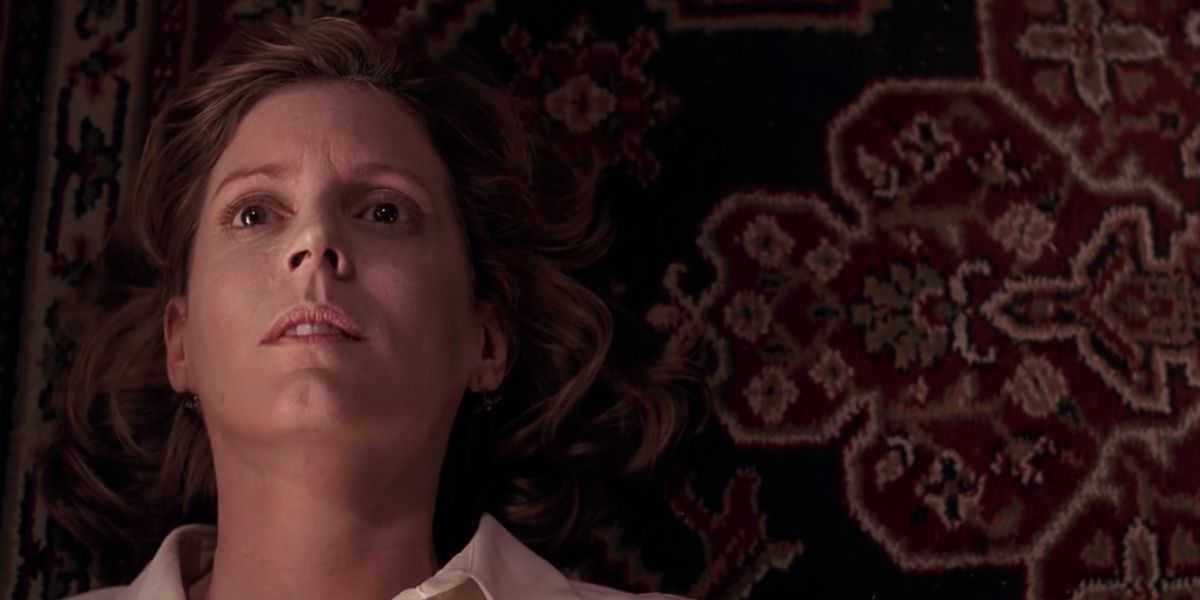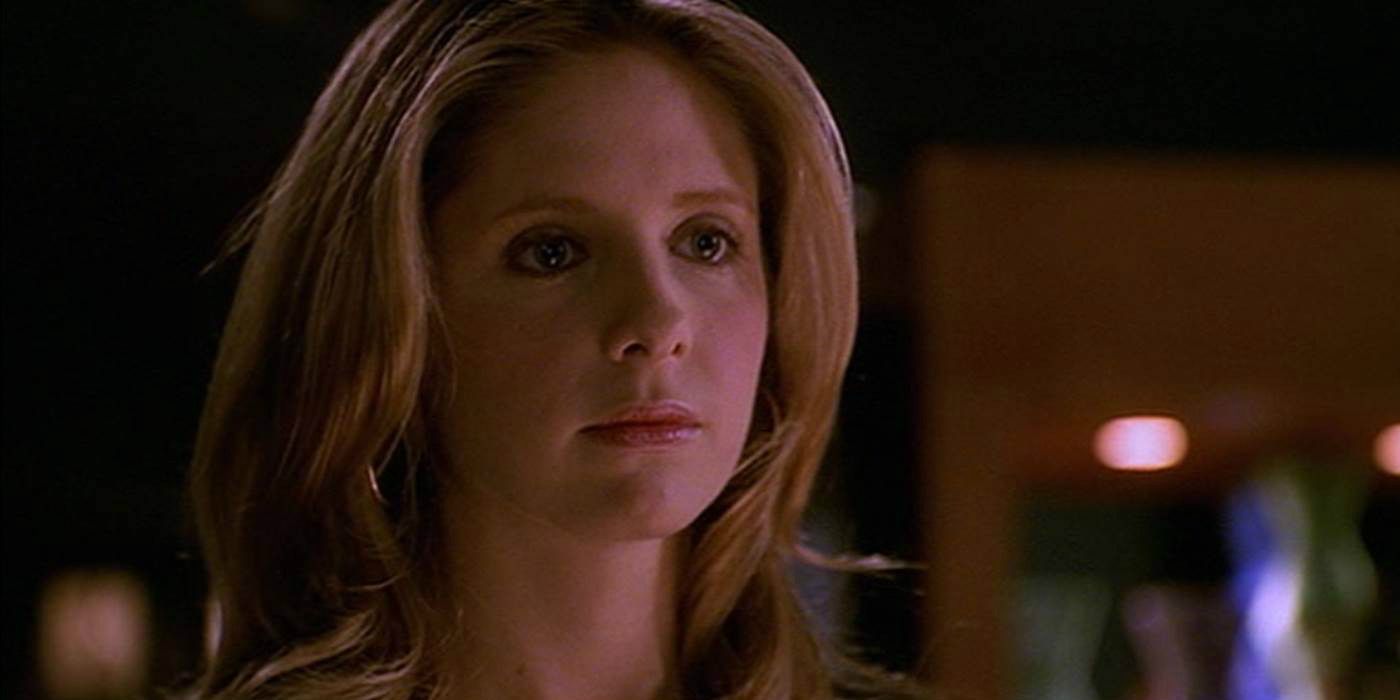Despite the ever-evolving world of television, Buffy the Vampire Slayer is still seen as the definitive supernatural teen drama 25 years after its release. Buffy Summers was a strong female role model who subverted the trope of the damsel in distress, Willow proved that the nerdy best friend could be a powerful force without her friends, and Giles still holds up as one of the most endearing mentor figures in modern television.
Given how beloved Buffy the Vampire Slayer is, it comes as a shock to learn that its roots weren't exactly the strongest. The show's first season was notably stooped in '90s clichés and uncomfortable gender politics, to the point that many aspects of the premiere season were unrecognizable by the end of its seven-season run.
The Title Sequence
It's not uncommon for a show's title sequence to change over the course of a program's lifetime, and this is especially true for Buffy the Vampire Slayer. Each season brought changes to the opening credits as new clips were inserted to show off the cast and the action, and even the theme song was rerecorded after the show's second season.
Beyond updates to the visual component of the show, the most notable change to the title sequence was the loss of the opening narration. Nearly every episode of Buffy the Vampire Slayer's first season started with the now classic "In every generation, there is a chosen one." mantra, yet by Buffy's conclusion, the narration was gone.
The Cast
While the core trio of Buffy's Scooby Gang remained consistent from start to finish, many characters came and went during Buffy the Vampire Slayer's seven-season run. The show only boasted 5 main characters and a handful of supporting players while Buffy's final season had a recurring cast of over a dozen characters.
The likes of Cordelia Chase and Angel may have given the original season of Buffy color and drama, but the characters' roles were replaced by the likes of Spike and Anya following their departure at the end of season three. Even supporting characters like Principal Snyder and Joyce Summers were killed off to give the show space for new personalities such as Buffy's sister Dawn.
More Giles
Though Anthony Stewart Head was present throughout Buffy the Vampire Slayer's run, the actor was notably given less to do during the show's last two seasons. He served an integral role during the show's first five seasons, yet was demoted to a recurring player following Buffy's death and revival due to the actor's desire to spend more time with his family.
While Giles was largely portrayed as a comedic presence during the show's first season, he gradually evolved into a father figure and a fan-favorite Buffy character as the show progressed. Fans might have missed having the character constantly bounce off the Scoobies during the show's final season, but his absence was key to the character's maturing and taking charge.
Tone
When Buffy the Vampire Slayer first started out, the show was largely a cheeky action-comedy stooped in the clichés of the '90s. It was a program very much of its time, and only the season finale, "Prophecy Girl," hinted at the depth that would come.
As Buffy the Vampire Slayer evolved, the show maintained its signature sense of humor which was based on colorful pop culture references and quick quips from its characters. The last two seasons, however, notably tamped down the sense of fun in favor of more serious adult drama, with the tone sometimes being quite dour.
Setting
Buffy the Vampire Slayer is set in the fictional town of Sunnydale, California, and throughout its seven-year run, the show's characters never moved. Despite how committed the Scooby Gang were to protecting their home, however, their base of operations notably altered from season one to season seven.
While much of the time was spent at Sunnydale High School (and the library in particular) during the show's first three seasons, the building was blown up in one of Buffy's best episodes. By the show's conclusion, the main headquarters for the Scooby Gang became the Summers' living room, a location that had been rarely used prior to season 3.
Fight Choreography
During Buffy the Vampire Slayer's first four seasons, the title character's stunt work was provided by Sophia Crawford, with the action scenes being choreographed by Jeff Pruitt. The two performers were crucial in developing the show's aesthetic, and ensuring the action scenes were fluid and dynamic.
Following the departure of Crawford and Pruitt at the end of season four, the show's fight scenes were different. Buffy's fighting style was less based on martial arts such as jiu-jitsu and more brawling inspired while the editing was much choppier.
The Villains
The Master was Buffy the Vampire Slayer's first Big Bad and was a largely camp villain who seemingly posed little threat to the world at large. He may have wanted to arise from his crypt beneath Sunnydale to feast up the blood of the innocent, but his schemes were largely ineffectual and secondary to the show's monster of the week storytelling.
With Buffy's seventh season, the stakes were much higher. The Scooby Gang were pitted against the First, a non-corporeal force that threatened to consume the Earth with its army of Turok-Han that kept Buffy on her toes while the First's sadistic servant Caleb mutilated her closest friends.
Willow's Sexuality
For much of Buffy the Vampire Slayer's early run, Willow's character was defined by her meek attitude and inability to express her feelings for her best friend Xander. The latter character would end up breaking her heart when he got together with Cordelia, though Willow herself moved past her crush when she connected with Oz.
When Buffy the Vampire Slayer entered its final season of television, Willow had drastically changed as a character. She was now a competent magic user who was (largely) confident in her skills, and also a loud and proud member of the LGBTQ+ community, something which viewers could not have predicted during season one.
Killing Main Characters
While Principal Flutey was devoured by a pack of possessed students and Buffy herself was drowned by the Master during the show's first season, a few major characters were killed on the program. The ever-controversial Joss Whedon was quick to do away with such innocence in subsequent seasons.
By the time Buffy's final season aired, the show was prone to pull at viewers' heartstrings left and right. Innocent teenagers like Cassie Newton were offed in stand-alone episodes such as "Help," long-term recurring character Jonathan was killed in cold blood by Andrew, and the likes of Anya and Spike made big sacrifices in the series finale "Chosen."
Buffy's Attitude
At the start of Buffy the Vampire Slayer, the title character was a spunky teenager who found the responsibility of fighting the forces of darkness to be an annoying burden that got in the way of her social life. It made her an endearing character and one who young audiences could relate to with ease.
By the conclusion of Buffy the Vampire Slayer, Buffy Summers had grown considerably. Her sense of optimism and playfulness was largely sanded away by the trauma of having died on multiple occasions, and the character came across as dictatorial due to the pressure of having to lead her friends into battle against the ultimate evil.

